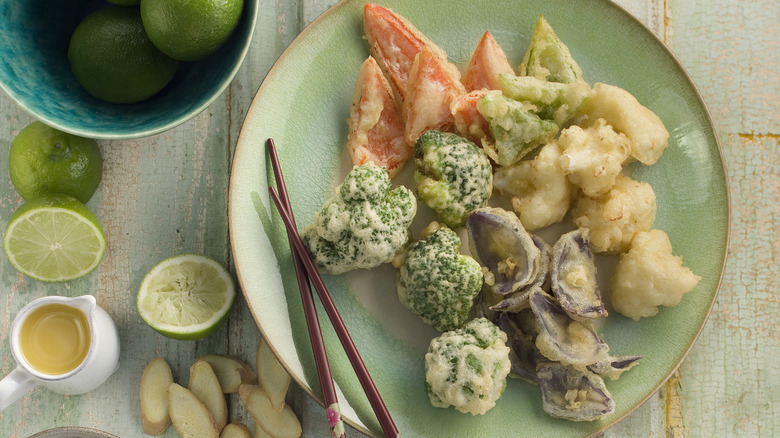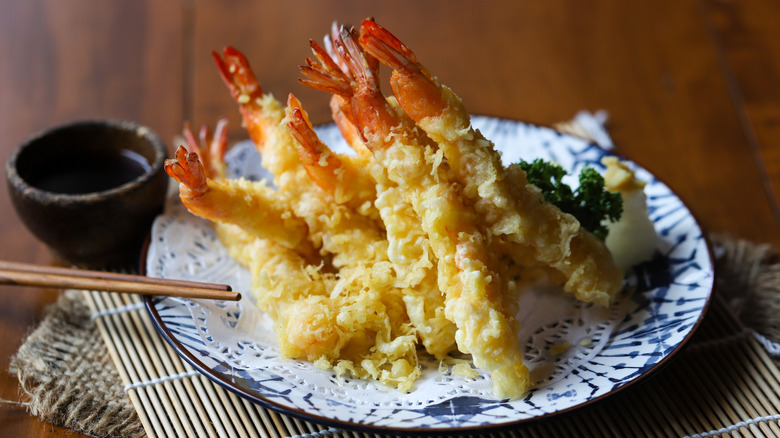The Easy Mistake That's Ruining Your Tempura Batter
We may receive a commission on purchases made from links.
Tempura is a Japanese batter made of flour, water, and egg that fries into crispy perfection. What makes the batter stand out against other fry coatings is its lightness; when done right, it's not oily or heavy, and it doesn't slide off when you take a bite. It's like eating a crispy cloud. Vegetables, seafood, and meat are the usual suspects, but almost anything could benefit from being tempura-coated and fried. Although a simple batter in terms of ingredients, technique is important to ensure the finished fried product is light as air. Lucy Seligman, restaurant critic, food historian, and author of two Japanese cookbooks, including "Easy Japanese Recipes For The Home Cook", told us her top tips to perfect tempura batter.
It turns out, the most critical step is the mixing. "Don't over stir," Seligman warns, "Stir the batter as little as possible to avoid gluten formation (I like to use long cooking chopsticks for this), which can make the batter tough." Even mixing the batter until completely smooth might be too much. "The perfect tempura batter is light and airy and has a slightly lumpy consistency," she says. The bumps don't mean the final batter will be undermixed or weirdly textured when fried, so don't go overboard stirring the lumps out.
Like they say, everything is better fried (in tempura)
As mentioned, seafood and vegetables are commonly found tempura-fried in Japanese cuisine. There are a few tricks to remember when frying. For example, the simple way to straighten tempura shrimp to make them look like the ones you'll find in Japanese restaurants, is to slice slits in the bottom of the raw shrimp and bend them until they lay straight. Or, try giving some fried clams the tempura treatment for a switch up. If you're a no-waste kind of person, use up every part of your veg by making tempura fried greens.
We covered cooking techniques for the batter, but for the actual frying part, cook time and oil choice will also help you get perfect results. The best oil for tempura is untoasted sesame oil, canola oil, rice bran oil, or a blend of all of them. You can use the chopstick test to cook tempura. Insert a chopstick into the frying oil and when it stops vibrating, the tempura is fully cooked to crispy perfection. Be sure to use a heat-resistance chopstick; you can easily find them online, like these Hiware fiberglass chopsticks from Amazon.
If you want to stick with expert Lucy Seligman when making batter at home, you'll find her tempura recipe useful.

